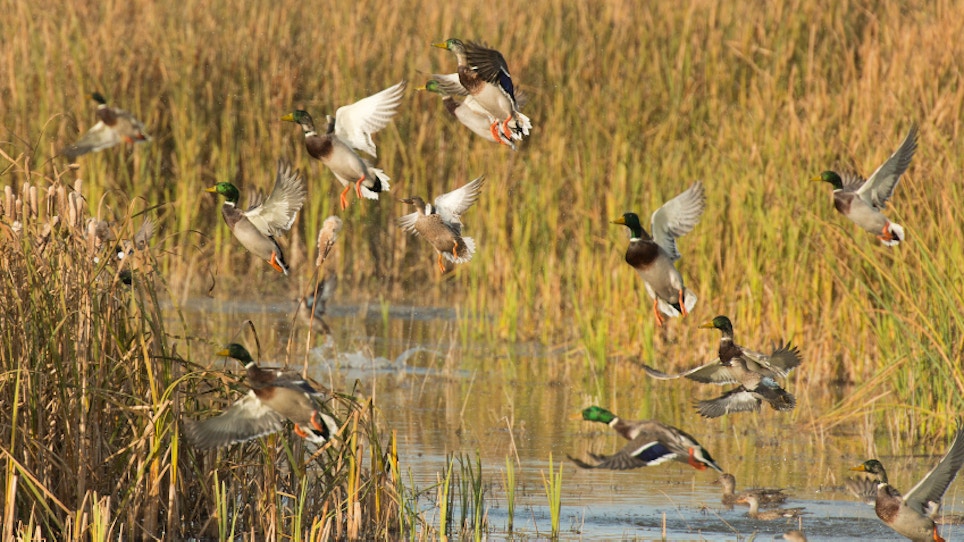The latest figures from the U.S. Fish and Wildlife service show a record number of ducks this year across northern prairies of the U.S. and the Canadian boreal forest despite a drier than normal winter in some key breeding areas.
According to the 2015 Trends In Duck Breeding Populations report, the survey area showed 49.5 million birds between May and early June, up from 49.2 million birds during the same time last year. The population is 51 percent above the long-term average between 1955 and 2014, the report shows.
“We are fortunate to see continued high overall duck populations in North America’s breeding areas this year,” said Ducks Unlimited CEO Dale Hall. “Though conditions were dry in some important habitats, we had large numbers of birds returning this spring and good conditions in the boreal forest and other areas of Canada."
Some areas of the U.S. saw significantly lower precipitation this past winter, though an early spring helped the breeding populations there, the survey says. Habitats in Canada, however, were good overall, with some getting more precipitation than normal, creating "excellent conditions," the report says. Pond counts across the survey area were down 12 percent from 2014.
Ducks Unlimited blames "resource extraction" and reduced Conservation Reserve Program lands for increased pressure on duck populations.
“An early spring balanced with poorer habitat conditions was apparent in this year’s survey,” said DU Chief Conservation Officer Paul Schmidt. "Fortunately, these conditions had minimal impacts on this year’s overall breeding bird numbers, but hunters should be concerned about these trends and what they might mean in future years."
According to DU, Teal and Canvasback have seen the greatest increase in populations over 2014, with Mallards increasing 7 percent and Pintails and Redheads seeing a 6 percent drop.
Here is DU's tabulation of the 2015 duck numbers:
Mallards: 11.6 million, which is similar to the 2014 estimate and 51% above the long-term average.
Gadwall: 3.8 million, which is similar to the 2014 estimate and 100% above the long-term average.
American Wigeon: 3.0 million, which is similar to the 2014 estimate and 17% above the long-term average.
Green-winged Teal: 4.1 million, which is 19% above the 2014 estimate and 98% above the long-term average.
Blue-winged Teal: 8.5 million, which is similar to the 2014 estimate and 73% above the long-term average.
Northern Shovelers: 4.4 million, which 17% below the 2014 estimate and 75% above the long-term average.
Northern Pintails: 3.0 million, which is similar to the 2014 estimates and 24% below the long-term average.
Redheads: 1.2 million, which is similar to their 2014 estimate and 71% above the long-term average.
Canvasbacks: 0.76 million, which is similar to the 2014 estimate and 30% above the
long-term average.
Scaup: 4.4 million, which is similar to the 2014 estimate and 13% below the long-term average.
Black Ducks (Eastern Survey Area): 541,000, which is 11% below the 2014 estimate and 13% below the long-term average.






